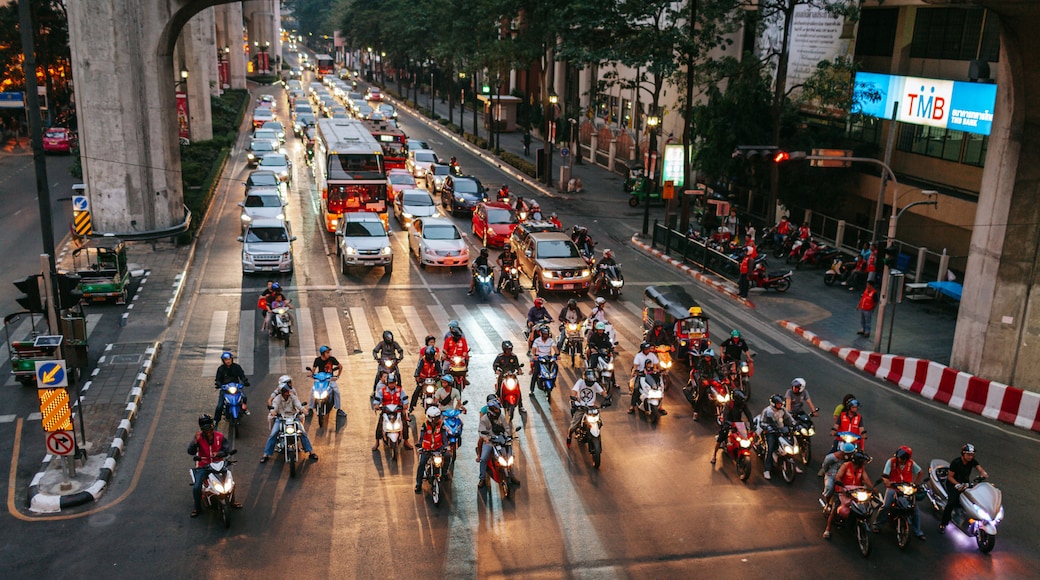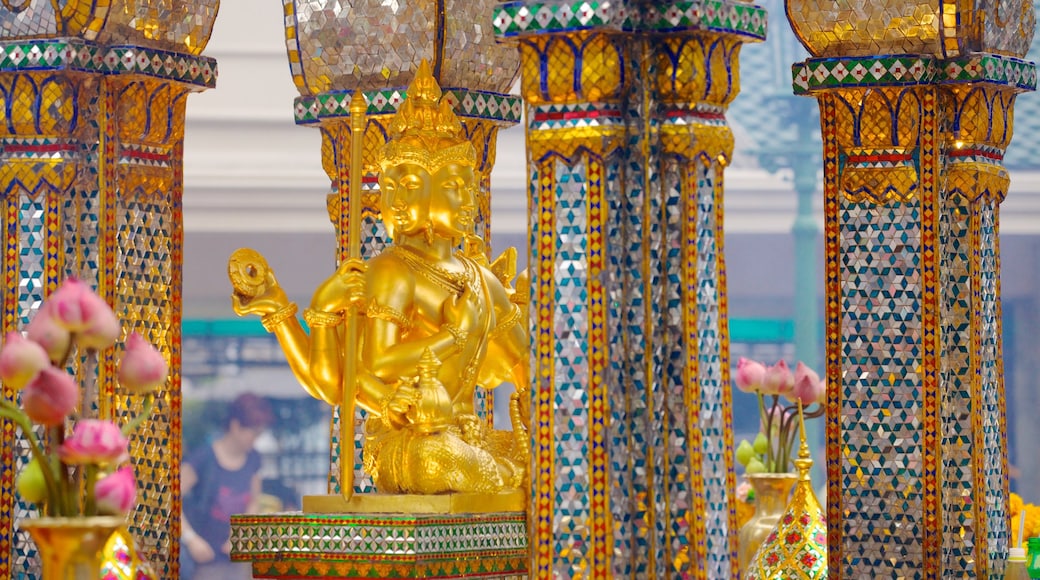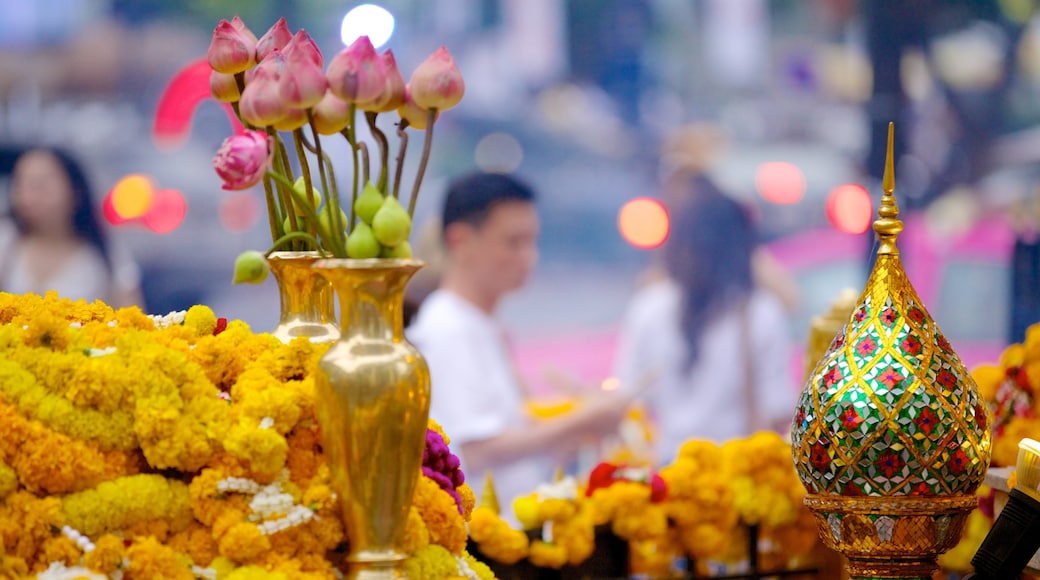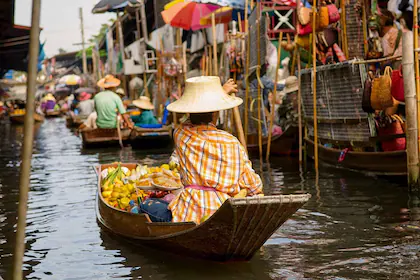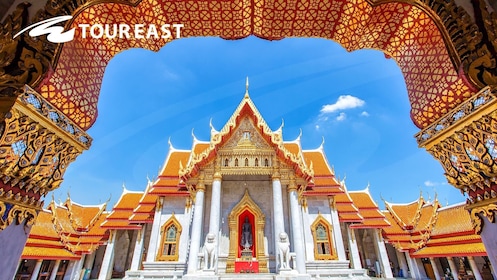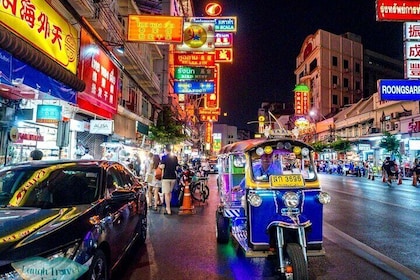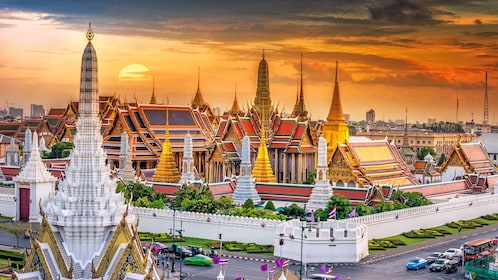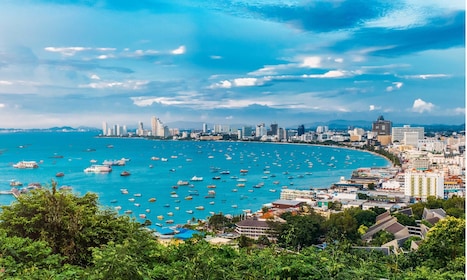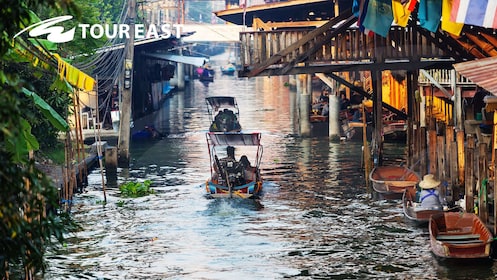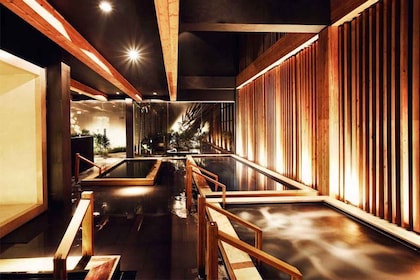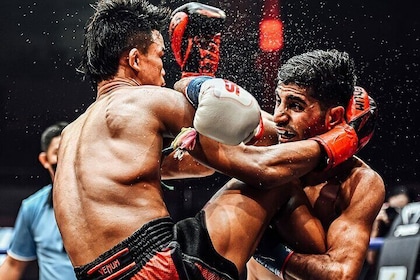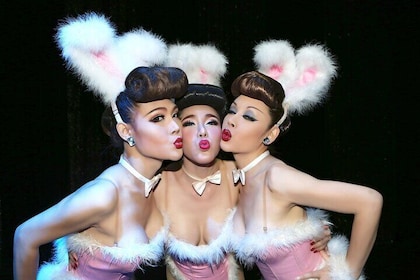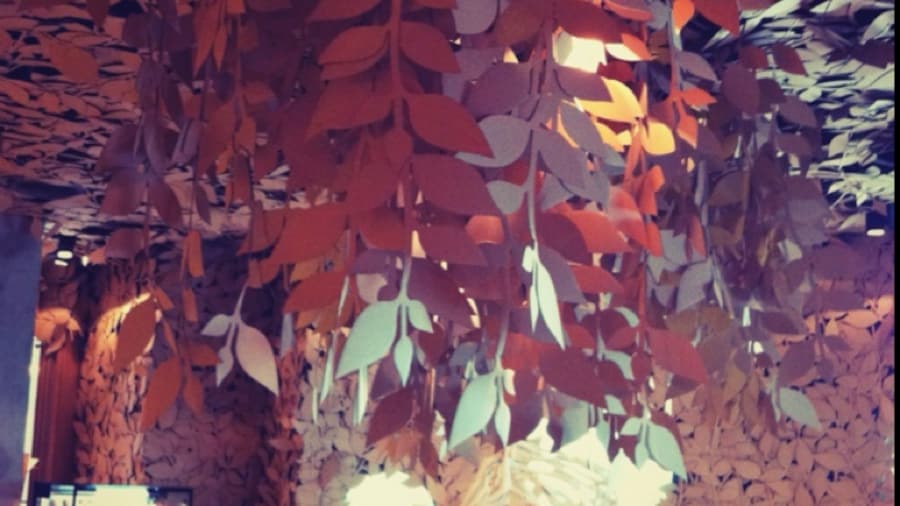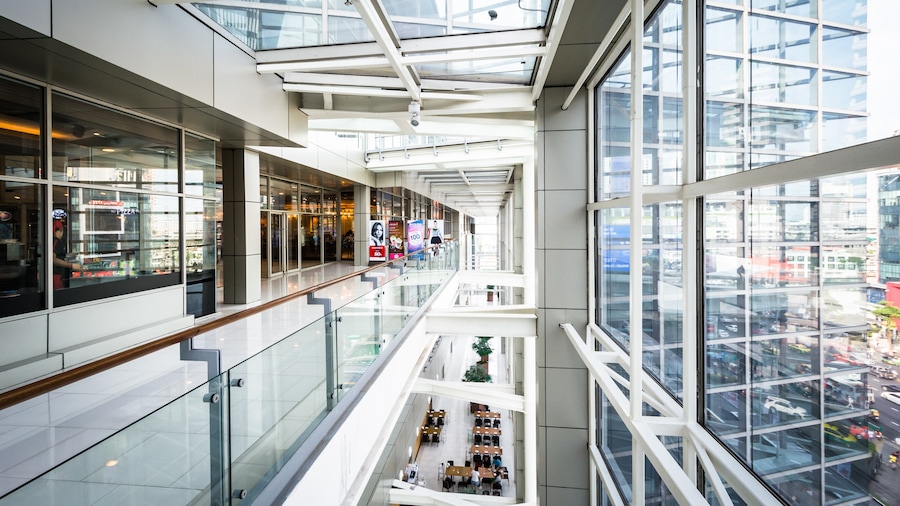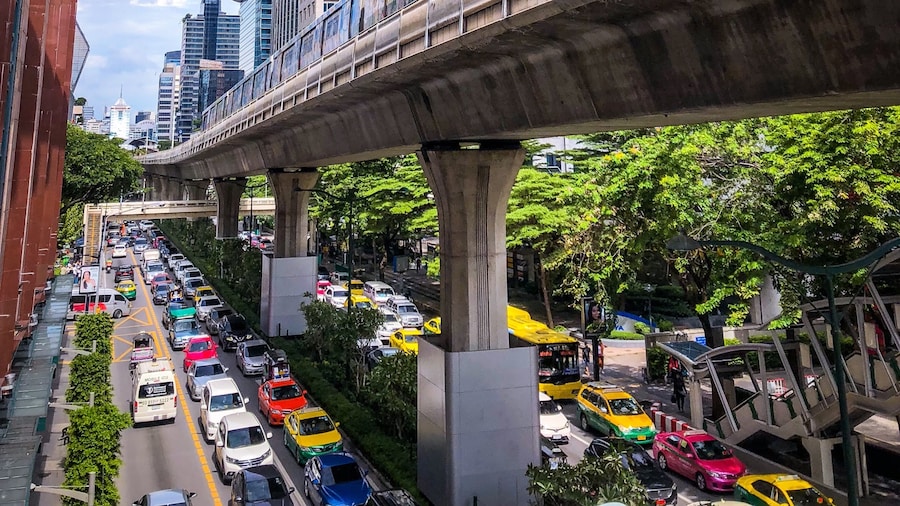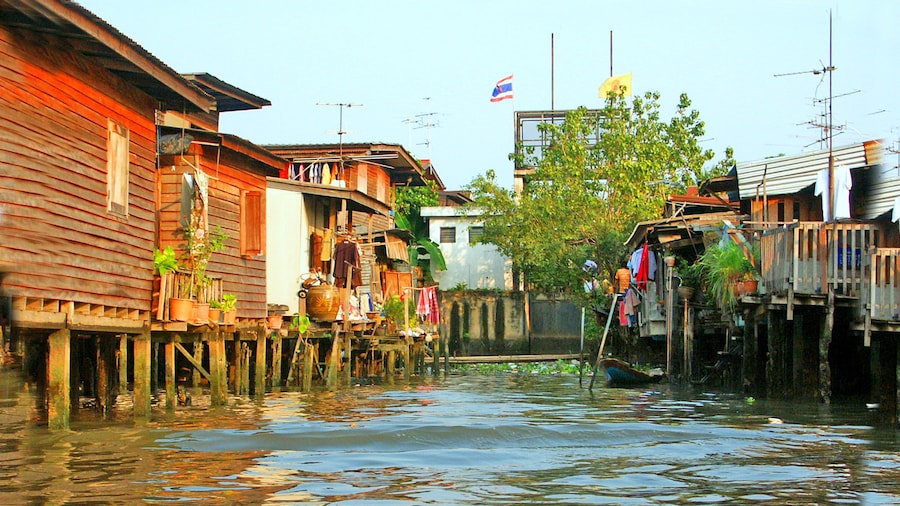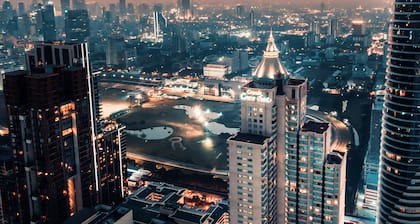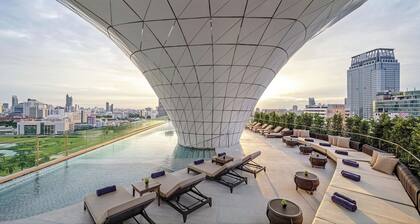Garlands, burning incense and music surround Erawan Shrine as the crowds come to pay their respects to the statue of Brahma. The number of people who gather here illustrates the role that traditional religion still plays in modern-day Thailand.
The shrine was named after the three-headed elephant from a Hindu legend. Tucked away in the middle of the modern city, the shrine seems out of place for two reasons: One, it is dedicated to a Hindu god in a Buddhist country, and two, it is located at one of Bangkok’s busiest intersections. Thai people have adopted the Indian custom of erecting shrines at construction sites and it sits at the base of the Grand Hyatt Erawan Hotel.
The shrine was erected in 1956 to ward off the evil forces that pestered the construction of the hotel by causing fatal accidents and material losses. An astrologer advised that a new shrine for Brahma should be built and the project was reportedly finished without further incidents. Today, worshipping at this shrine of good fortune continues. You will smell the incense and see the crowds from a distance. Watch Thai people of all walks of life stop to bow, bring offerings and sing or dance. Make a donation to the performers or buy flowers for good luck.
Performing acts of kindness is encouraged here: Pay to set a caged bird free or buy a lottery ticket from a disabled seller. If you come to just observe, head straight to the glittering canopy covering the golden figure of the Hindu god with four faces and arms. Thai people call him Than Tao Mahaprom or San Phra Prom. The current statue is a replica the original was mostly destroyed by a vandal in 2006. Onlookers beat the offender to death on the spot, which is a reminder of how sacred the statue is and what may happen to those who don’t respect the shrine.
Erawan Shrine is located in Pathum Wan district. To get there, take a taxi to the crossing of Rajadamri and Phloenchit roads or take the Skytrain to Chitlom Station.


